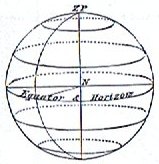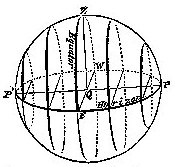|
RIGEL
Once again. Here there is much to digest. The Toucan is easy, for this is one of the southern birds, so to say:
Counting from the current heliacal right ascension place (0h) for the Toucan constellation in the Sun calendar, e.g.. from March 27 (86) to its heliacal place in the Era of Bharani (Musca Borealis) we have to subtract (subduct) 41 which leads us to day 86 - 41 = 45 ("February 14, viz. All Hearts' Day). And, as we should notice, there was a week from β Tucanae (*6.4 → 64 = 8 * 8) in "February 14 (45 → 360 / 8) to the 'Whip' star (↔ Lamed, Lambda) in the Toucan (viz. λ):
Counting glyphs from Ga1-1 onwards with no interruption all the way to Gb7-4 we will result in 229 (on side a) + 185 (on side b) = 414 in all, which seems to imply we have mastered the art of addition (ambition), because the current right ascension position of the Bharani star was *41.4. Zero had not been invented because there was no need for it, and the same goes for the carriage wheel. Only the potter's wheel was important.
... When the old woman (somewhere in the Mediterranean area) was asked what 29 meant she chuckled and formed a round opening between her left forefinger and thumb through which she then repeatedly pushed her right forefinger ... ... The Hawaiian woman who was interviewed chuckled because the assassination of Captain Cook coincided with the day we have named All Hearts' Day - when in February 14 (2-14) the war-god Kuu returned to power ... Thus, in the era of Bharani the northern spring equinox had not yet arrived. 121 (May 1) - 86 (March 27) = 35 = 41 - 6 = 80 (0h) - 45 (All Hearts' Day when Captain Cook was assassinated). ... Early on Sunday morning, 14 February 1779, Captain Cook went ashore with a party of marines to take the Hawaiian king, Kalaniopu'u, hostage against the return of the Discovery's cutter, stolen the night before in a bold maneuver - of which, however, the amiable old ruler was innocent. At the decisive moment, Cook and Kalaniopu'u, the God and the King, will confront each other as cosmic adversaries. Permit me thus an anthropological reading of the historical texts. For in all the confused Tolstoian narratives of the affray - among which the judicious Beaglehole refuses to choose - the one recurrent certainty is a dramatic structure with the properties of a ritual transformation. During the passage inland to find the king, thence seaward with his royal hostage, Cook is metamorphosed from a being of veneration to an object of hostility. When he came ashore, the common people as usual dispersed before him and prostrated face to earth; but in the end he was himself precipitated face down in the water by a chief's weapon, an iron trade dagger, to be rushed upon by a mob exulting over him, and seeming to add to their own honors by the part they could claim in his death: 'snatching the daggers from each other', reads Mr. Burney's account, 'out of eagerness to have their share in killing him'. In the final ritual inversion, Cook's body would be offered in sacrifice by the Hawaiian King ...
The star named Boat (Zaruak) in Eridanus, viz. γ, was located in MARCH 15. ... The brutes of spring caused the downfall of both Captain Cook and Julius Caesar. We are close to the key myth of mankind, that which explains the regeneration of sun and of growth. Once at least some people kept the tradition living. I became interested in what really happened at March 15 and reopened Henrikson to find out: Caesar had been forewarned of the threat by the prophet Spurinna, who told him that a great threat was coming at Idus Martiae or just before [i.e. at 3-14]. The day arrived and Caesar was still living, walking to his meeting with the Senate when he happened to encounter Spurinna and told him jokingly that he was still alive. Spurinna calmely answered that the day had yet not ended ... ... Space and time are a single, related concept in Runasimi [the language of the Inca people], represented by one word, pacha, which can also mean 'world' and 'universe'. The image of time familiar to Waman Puma was static and spatial: one could travel in time as one travels over earth - the structure, the geography, remaining unchanged. To him it does not matter that he shows Inka Wayna Qhapaq, who died in 1525, talking to Spaniards who did not arrive until 1532. Wayna Qhapaq was the last Inca to rule an undivided empire: he is therefore the archetype, and it must be he who asks the Spaniards. 'Do you eat gold?' ...
|
|||||||||||||||||||||||||||||||||||||||||||||||||||||||||||||||||||||||||||||||||||||||||||||||||||||||||||||||||||||||||||||||||||||||||||||||||||||||||||||||||||||||||||||||||||||









.jpg)